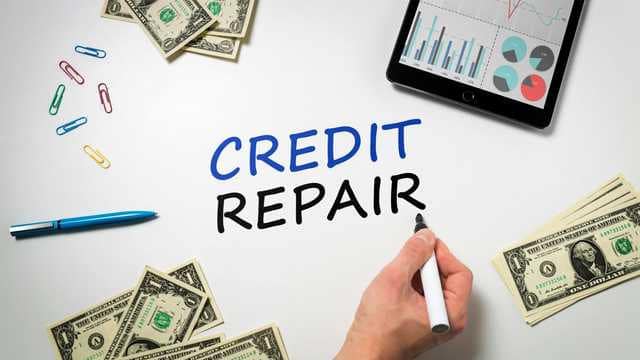Rewrite this article: What credit cards to use when you have bad credit When you have bad credit, a secured credit card is the only option you have. That’s what we got for Brian, and by maintaining a good payment history on his secured credit card, he raised his credit score by almost 50 points in less than a year. here is a list of best secured credit cards for bad credit to apply for, including the Open Sky Secured Visa and Discover It Secured. Also, keep track of a credit card issuer’s customer service history. JD Power publishes an annual study on Credit Card Customer Satisfaction. According to JD Power, the three main card issuers are American Express, Discover and Capital One. These are the companies most likely to resolve your issues on the first call. As for the banks, Capital One, BB&T and Chase get the best marks. Optimize your debt ratio – do it without changing your spending habits Now for the fun part, where I’ll teach you the magic number that credit agencies really want you to go into debt and why. Your FICO credit score is calculated using the following formula: 35% payment history30% of the amount due15 percent story length10% new credit10% credit types This means that most of your credit score is made up of one-time payments and the amount of available credit you have. Obviously, paying your bills on time will improve your credit history over time, so we’ll focus on the debt-to-credit ratio. How You Increase Your Credit Score Using Credit Cards Keeping credit card balances low can boost your score by up to 100 points. Many experts will tell you respect 30% of your available credit. This means that if you have $1,000 in credit, you should only have balances totaling $300. The truth is, the more available credit you have, the better your score will be. Keeping credit card balances low can boost your score by up to 100 points. I recommend keeping your available credit at 94%. Experian too. I checked my own credit report one day and this is the advice they gave me to increase my own credit rating. You should only spend $6 for every $100 of available credit you have to successfully raise your credit to the highest possible score. What this shows to creditors is that if something serious happens in your life (medical emergency, job loss, etc.), you still have access to funds to pay your bills for the next six months. This lowers your credit risk and makes you someone lenders like to work with. I have another game-changing trick in my bag for boosting your credit score. Credit cards for bad credit or no credit Our client Brian couldn’t understand why his credit was so bad. He seemed to be doing everything right – he paid off all his old debts and avoided credit cards. Credit cards are however necessary to maintain a healthy credit rating. But not all credit cards created are created equal and can affect your credit score in different ways. You need to understand the different options and choose one that is the best credit card for bad credit. If you have no credit or are a beginner just starting to build your credit, the only option you can choose is credit cards for beginners or credit cards with no credit. Before applying for credit cards to build a credit score, it’s important to understand their real impact on your FICO score. When we talk about credit limits, we are only talking about normal credit cards, called revolving lines of credit. This means that if you have a limit of $1,000 and a balance of $600, you can still spend $400. A secured credit card for bad credit is the best option Secured credit cards (which are prepaid) and store credit cards act more like installment loans on your credit report. This means that if you have a limit of $1,000 and a balance of $600, it still shows up on your credit report as a $1,000 loan with no available credit. Avoid cards with high fees and poor customer service. In 2021, the worst credit cards include First PREMIER Bank Gold Credit Card, Bancorp South Gold Mastercard and Arvest Bank Visa Classic Card. These cards can hurt your credit rating more than they help it. How You Manage and Use Your Credit Responsibly – Just Follow These Simple Steps That said, the most important thing is how you manage and use your credit responsibly. You should never be late paying your credit card bill. Use the online payment option to automatically manage and set up your bill payments. Always spend less than you earn. For this, you need a budget that you must strictly follow. How To Keep A High Balance On Every Card And Increase Credit Limit – Powerful Lifehack Spending only six percent of your available credit makes it difficult to get credit increases from your credit card companies. They won’t increase your limits on a card you never use. So, I’m using this powerful trick to boost my credit score to the stratosphere, and you can have huge success with it too! What I do is charge and maintain a high balance on each card for two months. In the third month, I pay everything back and let it rest for two months. This way, I use my credit card enough for the bank to keep raising my limit (thereby increasing my available credit) while maintaining enough available credit to satisfy the credit agencies. Master this method and you will notice that your score will go up in a few months. And there are a few other insider loopholes to instantly transform your life. All of these tricks have the huge potential to boost your credit score which has already been proven. Payments before the due date – trick to increase credit usage One trick to increasing your credit score utilization without really having to change your spending behavior is to pay your bill about 10 days before the due date. Example:Sale: $65Monthly expenses: $500Credit limit: $1,065Deadline: 25th of each monthMonthly expenses paid on due date (25th of the month): 53% utilizationMonthly expenses paid 10 days before due date (15th of the month): 6% usageCredit Usage Formula: Credit Used / Total Credit Credit Bumpers – tip to protect history – Cushion the blow A single late payment from years ago, perhaps when you were back in college, could have a significant impact on your score today. A trick to absorbing some of the impacts of a negative credit history is to use credit bumpers by adding more accounts to your total number of open accounts. This example shows how much faster you recover from a late payment when you have 5 accounts open instead of just one. Example:1 account with 1 missed payment:Year 1: 11 punctual / 12 in total = 91.67% very badYear 2: 23 on time / 24 total = 95.83% Very poorYear 3: 35 punctual / 36 total = 97.22% poorYear 4: 47 punctual / 48 total = 97.92% poorYear 5: 59 on time / 60 total = 98.33% correct 5 accounts with 1 missed payment:Year 1: 59 on time / 60 total = 98.33% correctYear 2: 119 on time / 120 total = 99.17% goodYear 3: 179 on time / 180 total = 99.44% goodYear 4: 239 punctual / 240 total = 99.58% excellentYear 5: 299 punctual / 300 total = 99.67% excellent Credit History Formula: On-Time Payments / Total Number of Payments There is one last tip (Judgment search in court recordss) to get your credit score out of the gutter and make your life easier.
Subscribe to updates
Unsubscribe from updates
Source link







